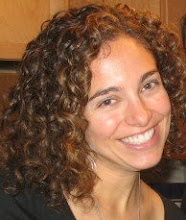Imagine you are walking through a forest. Behind you are nut groves. To your left a pond with ducks. Ahead are orchards with unusual fruit trees like persimmons and Asian pears. Beneath the trees were once berry bushes that have since been removed as the canopy above it has grown. All around are herbs and native plants designed to promote the growth of these trees. Imagine this forest also includes playing fields, education programs, community p-patches and harvesting parties. Last weekend I visited the much-heralded
Beacon Food Forest in South Seattle and took this imaginary tour. Beyond an inspiring project the food forest was a lesson in community organizing, dedication and creative vision.
I'd heard about the food forest as most people did, through
Facebook. It was an article on a local Seattle non-profit news site
Crosscut.com about "the nation's largest public food forest" that went viral and first drew public attention to the project. As word spread
other major media outlets reported on the edible food forest and the three year project was suddenly in the national spotlight. So I was excited to learn about the opportunity to take a tour of the site, fittingly hosted by Crosscut.
And so on a cold and rainy March day I joined close to fifty others at Jefferson Park in Beacon Hill to hear about the genesis of the food forest. I had read the articles and wanted to see what all the fuss was about.
This is the site of the future forest. Not much to see right now. But as we walked along the gravel road we were asked to imagine. Imagine the trees, the insects, the bushes and groves. Imagine the potential.
Interestingly the forest began as a final project in a
permaculture design class. As the idea gained momentum the original designers formed the Friends of the Beacon Food Forest which includes community members and activists involved the project. The group received a $100,000 award from the Seattle Department of Neighborhoods and P-Patch Community Gardens Program, and beyond working on the project they gathers for social events including potlucks and movie screenings to foster community.
 |
| Site plan as posted on NPR's food blog, The Salt |
Work will begin this summer with planting starting in the fall. The forest will rely on many volunteers and will take years to reach fruition. But there is a lot of energy around the project and there are many exciting aspects to this edible landscape - the application of permaculture principles, the use of public land, the issue of community revitalization and of course the food justice component. And no one involved with the project seems concerned that people will take advantage of the forest and pick all its fruit. Instead, they are firm in the belief that the food forest will be a place of community, respect and of course, imagination. And by the end of the tour as this group of locals stood around eating home-baked cookies, I found myself reminded of the famous quote from Margaret Mead: "Never doubt that a small group of thoughtful, committed citizens can change the world. Indeed, it is the only thing that ever has."



No comments:
Post a Comment